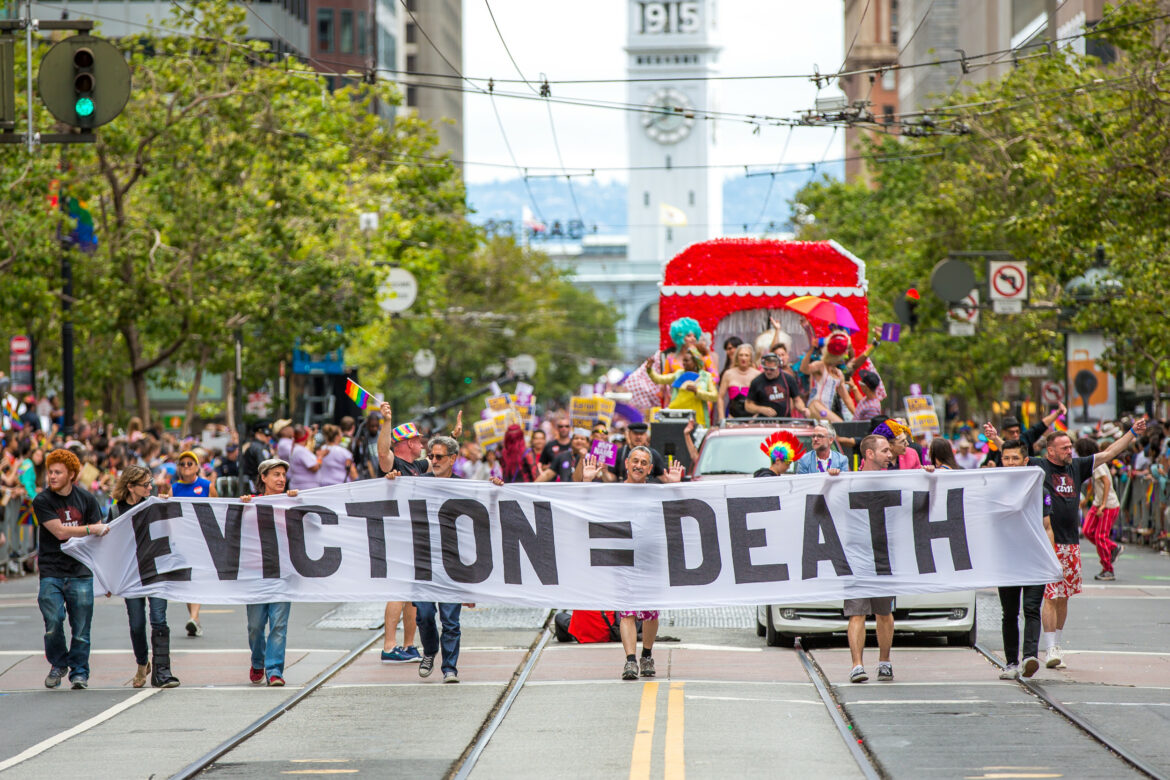The head of tenant legal defense in San Francisco wants renters to hear one message loud and clear: Even though the eviction moratorium is now over, “You’re still protected.”
Thursday was the end of the statewide pause on evictions for unpaid rents due to COVID-19-related hardships, and by Friday landlords could begin the process to remove tenants who had not paid at least one-quarter of what was due over the previous year. But tenants can still do much to protect themselves, said Ora Prochovnick, director of litigation and policy at the Eviction Defense Collaborative, which coordinates nonprofits providing free legal aid as part of the city’s Right to Counsel program.
“They should stay put, they should not worry about losing their homes, they should avail themselves of the rental assistance programs, and they’ll be OK,” Prochovnick said.
Prochovnick explained what tenants can expect — and how they can remain housed — if their landlords try to evict them.
How much money to pay the landlord to avoid eviction
Tenants who have not paid any portion of their rent or utility bills that were due since April 2020 should immediately apply to the state’s rent-relief program, not only to get financial aid but also to be eligible for safeguards that can stall or even stop an eviction.
By Thursday, tenants needed to pay 25% of the rent that was due from September 2020 through September 2021, or else their landlords could begin the eviction process the following day, according to a timeline established by state legislation. Tenants cannot be evicted for the remaining unpaid 75% (though their landlords can later pursue that money in small claims court) or for unpaid rents due from April to August 2020.
Local protections passed last year should also prevent eviction for unpaid rents due in October 2020, said Kyle Smeallie, legislative aide to San Francisco Supervisor Dean Preston, who authored the city measure. But Prochovnick said tenants should pay that month too, because the local law may be superseded by the state’s timeline.
‘Pay or quit’ notice
To begin the eviction process for rent due during the pandemic, a landlord must send a tenant a “pay or quit” notice, giving them at least three days to pay what is owed — or move out.
When a tenant gets the notice, Prochovnick said, it is time to seek free legal advice by contacting the Eviction Defense Collaborative one of three ways:
- Call (415) 659-9184
- Email [email protected]
- Visit the group’s office at 1338 Mission St., on the fourth floor. Staff there receive walk-ins Mondays, Wednesdays and Fridays from 10 to 11:30 a.m., and 1 to 2:30 p.m.
A “pay or quit” notice’s time limit does not include holidays or weekends, and it begins the day after the landlord has given it to the tenant.
In a hypothetical situation in which the landlord gave a three-day notice on Oct. 1, the tenant would have until 5 p.m., Oct. 6, to pay the money or leave. If the tenant did neither, then the landlord could move on to the next step: a court summons.
Summons
The landlord could file an eviction lawsuit against the tenant on Oct. 7, and the court might issue a summons that day. After receiving the summons, the tenant would have to send the court a formal explanation of their side of the case within five business days, excluding holidays. Because Oct. 11 is Columbus Day, Oct. 15 would be the earliest deadline for response. If the tenant had not obtained legal representation by this point, they would have to personally submit a paper response at the San Francisco Superior Courthouse, Prochovnick said.
The tenant would automatically lose the case if they failed to respond in time.
The day after the tenant filed their response, either party could request a specific date for the case’s trial, to occur within three weeks. If the tenant lost the case, then the Sheriff’s Office would schedule a date to remove the tenant and their possessions from the property.
What can stop, or stall, an eviction lawsuit
There are two important things that can prevent or delay an eviction lawsuit filed in response to pandemic-related rent debt:
- Before the court issues a summons, the landlord must attest to having applied to the government’s rent-assistance program to be reimbursed for what the tenant owes, and that either the application has been denied or the tenant has neglected to fill out the appropriate portion of it for at least 15 business days. This means that if the landlord had not applied for rent assistance by Oct. 1, they could not start the eviction process until mid-month at the soonest.
- At any time, right up until Sheriff’s deputies start the removal process, the tenant can stop it by showing the court proof that the state has approved the application for rent assistance.
“If she applies, she’s not protected during the window between applying and approval,” Prochovnick said, referring to a hypothetical tenant. “So that’s when she — with the help of people like me who defend evictions — we’re going to need to drag our feet to slow the process down so that it doesn’t throw her out before she gets approved.”
These procedural protections will likely buffer the coming eviction wave, Prochovnick said, causing it to gradually swell instead of overwhelming renters all at once.
“It’s not going to be a tsunami,” Prochovnick said. “And because of that, I think that our right to counsel system is going to be able to absorb it and handle it. We will be busy, continuously busy, but I think we could keep up.”










